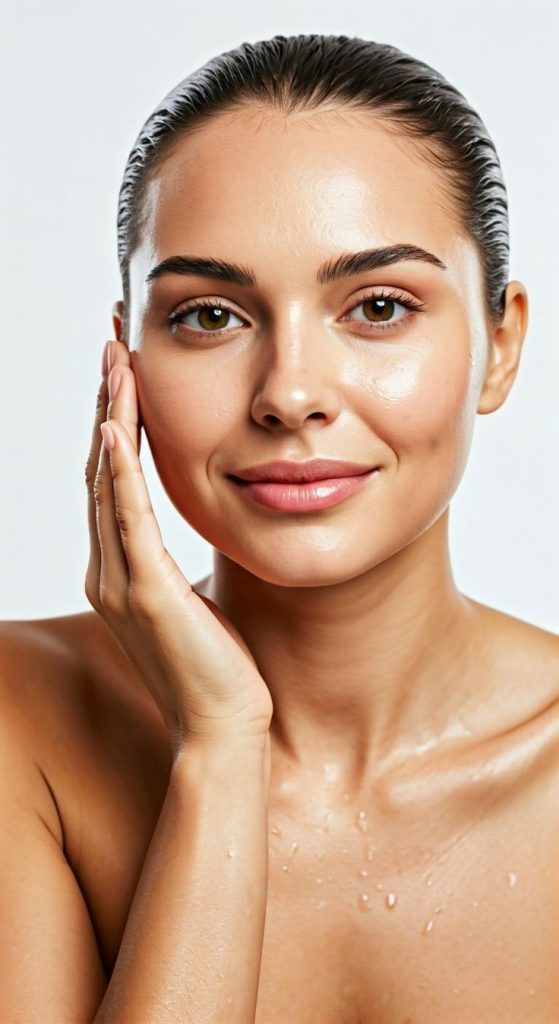In the vast and ever-expanding world of skincare, consumers are often faced with a fundamental choice: should they opt for treatments rooted in natural ingredients and holistic philosophies, or should they turn to advanced clinical procedures backed by scientific research? Both approaches offer unique benefits and cater to different needs and preferences. Understanding the distinctions between natural and clinical skin treatments is crucial for making an informed decision that aligns with your skin concerns, lifestyle, and overall health philosophy.
Understanding Natural Skin Treatments
Natural skin treatment typically emphasize ingredients derived from plants, minerals, and other naturally occurring sources. The philosophy often leans towards supporting the skin’s innate healing processes and maintaining balance through gentle, nourishing methods.
Key Characteristics of Natural Treatments:
- Ingredient Sourcing: Focus on botanical extracts, essential oils, clays, and other raw, unprocessed ingredients. Often prioritize organic, wild-harvested, or sustainably sourced components.
- Philosophy: Aims to work in harmony with the body, often emphasizing detoxification, nourishment, and gentle support for skin health. Less emphasis on aggressive intervention.
- Common Modalities: At-home DIY remedies, plant-based skincare products, traditional practices like Ayurvedic or Traditional Chinese Medicine (TCM) skin therapies (e.g., specific herbal masks, acupuncture for skin conditions).
- Benefits: Often perceived as gentler, with fewer synthetic chemicals. Can be appealing for those with sensitive skin or who prefer a “cleaner” beauty routine. May offer a more holistic approach to well-being.
- Limitations: Efficacy can vary widely, and concentrations of active compounds may be lower. “Natural” doesn’t always mean “non-allergenic” (e.g., essential oils can be irritants). Results may be slower or less dramatic for severe concerns. Regulation can be less stringent for some natural products.
Understanding Clinical Skin Treatments
Clinical skin treatments, on the other hand, are typically performed in a medical or aesthetic clinic setting and are characterized by their scientific backing, use of advanced technology, and often, higher concentrations of active ingredients.
Key Characteristics of Clinical Treatments:
- Ingredient Sourcing: Utilizes scientifically formulated compounds, often including synthetic ingredients, peptides, growth factors, and high concentrations of vitamins (e.g., prescription retinoids).
- Philosophy: Focuses on targeted intervention, often aiming for measurable and sometimes rapid results by directly addressing specific skin concerns at a cellular or structural level.
- Common Modalities: Chemical peels, laser therapies (e.g., fractional lasers, IPL), microneedling, neurotoxins (Botox), dermal fillers, advanced medical-grade skincare products.
- Benefits: Can deliver more dramatic and faster results for concerns like deep wrinkles, severe acne, stubborn pigmentation, and significant skin laxity. Often backed by extensive clinical trials and regulated by health authorities. Offers precision and controlled outcomes.
- Limitations: Can be more expensive and may involve downtime (redness, peeling, swelling). Some procedures carry risks of side effects if not performed by a qualified professional. May not appeal to those seeking a purely “natural” approach.
Which One’s Right for You?
The choice between natural and clinical treatments isn’t always an either/or proposition; often, a combination of both can yield the best results.
- For Mild Concerns & Maintenance: If you have generally healthy skin and are looking for gentle maintenance, mild anti-aging, or a focus on overall wellness, natural skincare products and lifestyle practices can be highly effective.
- For Specific, Stubborn, or Severe Concerns: If you are dealing with significant acne, deep wrinkles, severe sun damage, melasma, or considerable skin laxity, clinical treatments often provide the most effective and efficient solutions.
- For a Balanced Approach (Integration): Many individuals find success by integrating both. For example, using a gentle, natural cleanser and moisturizer at home, while incorporating clinical treatments like laser therapy for pigmentation or occasional chemical peels for rejuvenation. A dermatologist or aesthetician can guide this integrated approach.
- Consider Your Skin Type: Sensitive skin types may initially lean towards natural options but should be wary of potential irritants in essential oils. Clinical treatments for sensitive skin (like LED therapy or gentle peels) are also available.
- Consult a Professional: The most crucial step is to consult with a qualified dermatologist or experienced aesthetician. They can accurately diagnose your skin type and concerns, discuss your preferences, and recommend a personalized plan that incorporates the most suitable natural, clinical, or integrated treatments for you.
Conclusion
Both natural and clinical skin treatments offer valuable pathways to healthy, beautiful skin. Natural approaches emphasize gentle nourishment and holistic balance, while clinical methods provide targeted, powerful interventions with scientific precision. By understanding their respective strengths and limitations, and ideally by seeking professional guidance, you can confidently choose the right combination of treatments to achieve your unique skincare goals.


